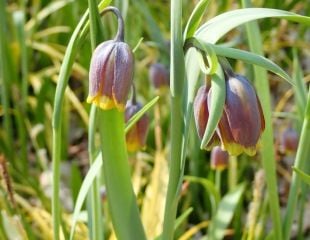
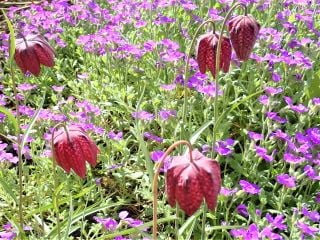
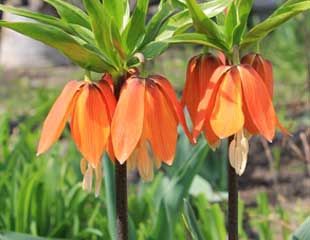
How to Grow Fritillaria
Fritillaria is a genus of about 100 species of bulbs of which the most commonly grown are Fritillaria michailovskyi illustrated left, F. melegaris known as Snake's Head fritillary, illustrated centre, and F. imperialis, illustrated right. Whilst all in the same plant group, they have different growing requirements. Fritillaria may look exotic, but they are easy to grow and fully hardy.
F. meleagris grows to around 30cms (12"), quite small and dainty whereas the Imperialis grows much taller, up to 1.5m (5')It is a robust plant with large showy flowers; a statuesque plant which makes a bold statement. It is often planted with other spring-flowering bulbs and plants.
The key to success is choosing the right type of fritillaria for your growing conditions.
Fritillaries are members of the Lily family and so they can be prone to Lily beetle attack. The best way to deal with this is to pick off (and crush) the bold red beetles if you spot them on the plants.
Growing conditions for Fritillaria
Growing conditions for Fritillaria Meleagris The Snake's Head Fritillaria
The Snake's head fritillary (illustrated centre) has delicate chequered drooping flowers in purple and white. Snake's head fritillaries will grow both in sun and in light shade, provided the soil is reliably damp. Snake's head Fritillaria is not tolerant of dry conditions, although they will grow in both exposed and sheltered areas, as long as the soil is damp. It is spring flowering and the bulbs will naturalise and multiply. As a woodland plant, it prefers dappled shade and moist soil, not too hot or dry.
Snake's head Fritillary is a delicate plant, for which reason it can be swamped by planting companions. It looks good growing in grassy semi wild areas, but since few of us have our own damp meadow areas, plant Snake's Head Fritillary in a semi shaded area. Plant the bulbs about 3/4 times their own depth in the Autumn.
If you do not dead head Snake's Head Fritillary will self seed if the growing conditions are suitable.
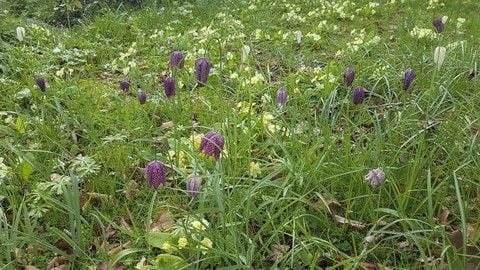
Growing conditions for Fritillaria imperialis The Crown Imperial
The Fritillaria Imperialis, known as Crown Imperial, requires quite different growing conditions, the exact opposite of the Snake's Head Fritillary. F. Imperialis will not tolerate damp conditions, it likes much drier growing conditions with well-drained soil. If planted in a poorly drained soil, Fritillaria Imperialis is prone to rotting. Dry, well-drained soil is essential which may make them more difficult to grow in clay soil, although this can be overcome by growing them in containers. Also, The Crown Imperial requires sun to thrive and is not shade tolerant.
The bulbs are best planted in September/October and planted deeply about 30 cms and spaced out to a similar distance as the plants become quite large as they mature. The Crown Imperial is spring flowering and its flower colours are yellow, red and orange. It is easy to grow and requires no real maintenance. The only drawback to growing F. Imperialis is that although it looks very stylish and statuesque, its smell is not great, (some say quite bad!).
Fritillaria Imperialis will produce seed, but it takes a long time, several years, to mature into a bulb, which means it may be better to dead head to divert the plant's energy into next year's bulb.
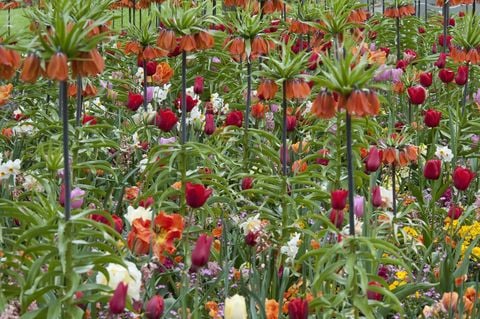
Growing conditions for Fritillaria michailovsky
Fritillaria michailovskyi (illustrated below and above left) is the less commonly grown of the three varieties and is a late spring, or early summer flowering bulb growing to around 20cms with nodding flowers. It is a smaller variety of Fritillaria growing to around 20 cms.
The bulbs should be planted at 3-4 times their own depth, and again, it is particular about growing conditions. This Fritillary likes fertile, well-drained soil and will not tolerate wet, particularly winter wet. It grows best in a sunny spot but will tolerate light shade and dry soil. It has nodding flowers which are brown/amber edged with green.
A meadow of Fritillaria michailovskyi
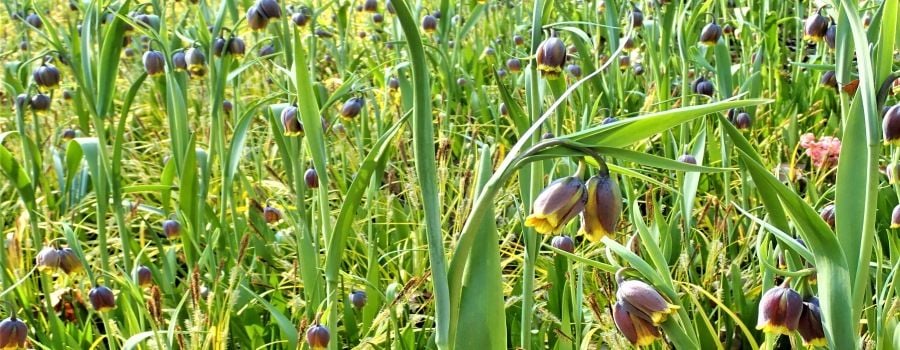

Green wheelbarrow Fritillaria is easy to grow and low maintenance.
